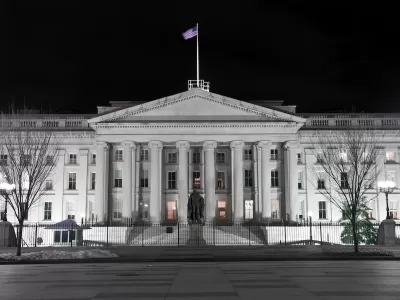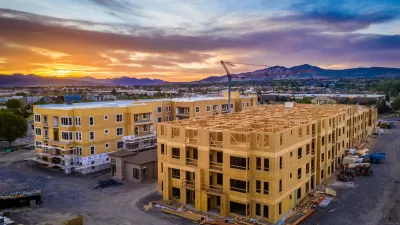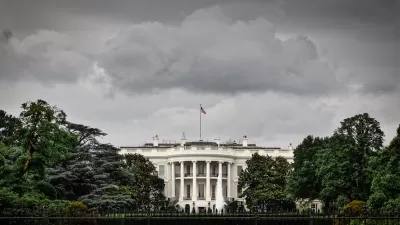How a tidal wave of potential changes at the federal level could throw many programs planners depend on into chaos, a roundup of last year’s zoning stories, and the continuing ripple effects of a landmark Supreme Court case.

The sweeping and immediate impacts of the election dominate much of the news in January, with executive orders already affecting infrastructure funding, clean energy projects, housing programs, and transportation grants. Our top story documents the effects of last year’s Grants Pass v. Johnson Supreme Court ruling in Nevada, where lawmakers now feel empowered to enact harsher policies against unhoused people. Other top stories focused on how the Safe System approach to road design can improve traffic safety, the potential of small supermarkets to serve as neighborhood anchors, and how urban design and architecture affect the human psyche.
The full list of January’s most-read stories:
1. Nevada Cities Pass Punitive Anti-Homeless Laws
State legislators rejected a proposed bill that would have enshrined a “Homeless Person’s Bill of Rights” in state law, while multiple jurisdictions passed harsher laws against camping in public space.
2. How the Trump Presidency Could Impact Urban Planning
Changes in federal policy and funding could have major effects on housing, transportation, and infrastructure around the country.
3. How Smaller Supermarkets Could Transform American Communities
Small-scale neighborhood stores have the power to boost local economic development and promote community.
4. National Housing Group Criticizes Executive Orders
According to the National Low Income Housing Coalition (NLIHC), the actions, if implemented, “would make it harder for our nation to ensure that everyone has access to an affordable, accessible place to call home.”
5. Research Links Urban Design and Human Happiness
How the study of “neuroarchitecture” is making new revelations about the links between architecture, public space design, and human emotions.
6. Save Lives on Our Roads Using the Safe System Approach
How centering a strategy that acknowledges and accounts for human error can make roads safer for all users.
7. Executive Order Pauses Infrastructure, Clean Energy Funds
In the early days of the administration, President Trump issued an order freezing federal funding disbursements, putting infrastructure and energy projects around the country into jeopardy.
A roundup of key zoning stories from last year that tackled parking minimums, state preemption, modular housing, and more.
9. Midburbs: A New Definition of Suburbs
Walkable, compact communities connected by transit to larger cities aren’t suburbs; they’re something else entirely.
10. San Diego Housing Assistance, Homelessness Programs Facing Major Cuts
Over a dozen programs that provide supportive housing and other services will see drastically reduced budgets as federal and other outside funding sources diminish.

Trump Administration Could Effectively End Housing Voucher Program
Federal officials are eyeing major cuts to the Section 8 program that helps millions of low-income households pay rent.

Planetizen Federal Action Tracker
A weekly monitor of how Trump’s orders and actions are impacting planners and planning in America.

Ken Jennings Launches Transit Web Series
The Jeopardy champ wants you to ride public transit.

Crime Continues to Drop on Philly, San Francisco Transit Systems
SEPTA and BART both saw significant declines in violent crime in the first quarter of 2025.

How South LA Green Spaces Power Community Health and Hope
Green spaces like South L.A. Wetlands Park are helping South Los Angeles residents promote healthy lifestyles, build community, and advocate for improvements that reflect local needs in historically underserved neighborhoods.

Sacramento Plans ‘Quick-Build’ Road Safety Projects
The city wants to accelerate small-scale safety improvements that use low-cost equipment to make an impact at dangerous intersections.
Urban Design for Planners 1: Software Tools
This six-course series explores essential urban design concepts using open source software and equips planners with the tools they need to participate fully in the urban design process.
Planning for Universal Design
Learn the tools for implementing Universal Design in planning regulations.
Heyer Gruel & Associates PA
Ada County Highway District
Institute for Housing and Urban Development Studies (IHS)
City of Grandview
Harvard GSD Executive Education
Toledo-Lucas County Plan Commissions
Salt Lake City
NYU Wagner Graduate School of Public Service






























